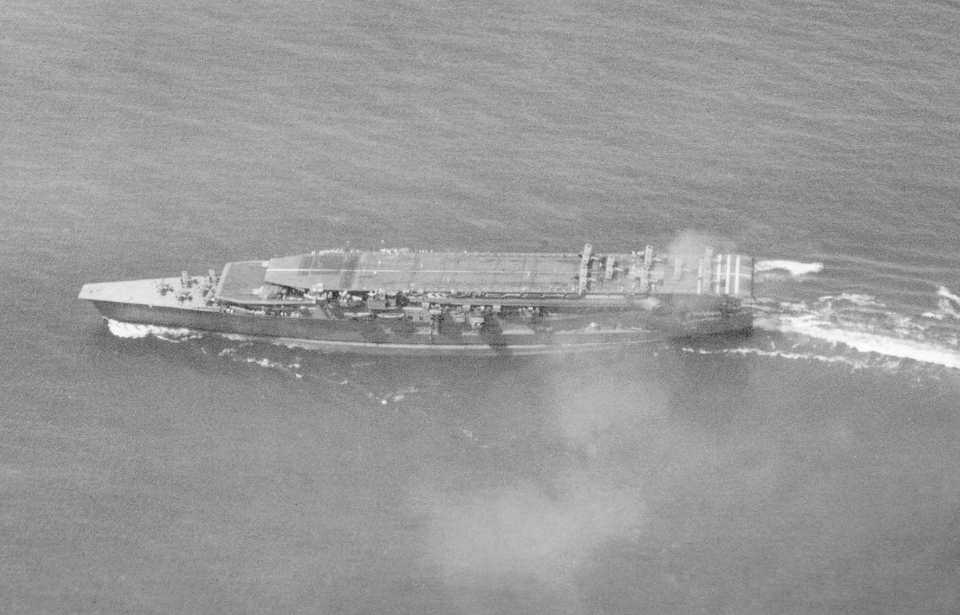At the outset of World War II, the Imperial Japanese Army (IJA) and Navy (IJN) appeared strong and unbeatable. Their soldiers displayed extraordinary bravery and an unshakable willingness to sacrifice their lives for their nation, while their commanders were recognized as adept strategists. A key element of Japan’s strategy centered on employing aircraft carriers to protect and support their pilots.
Consequently, the most effective way to defeat them was to prioritize targeting and eliminating these carriers.
Japanese aircraft carrier Kaga
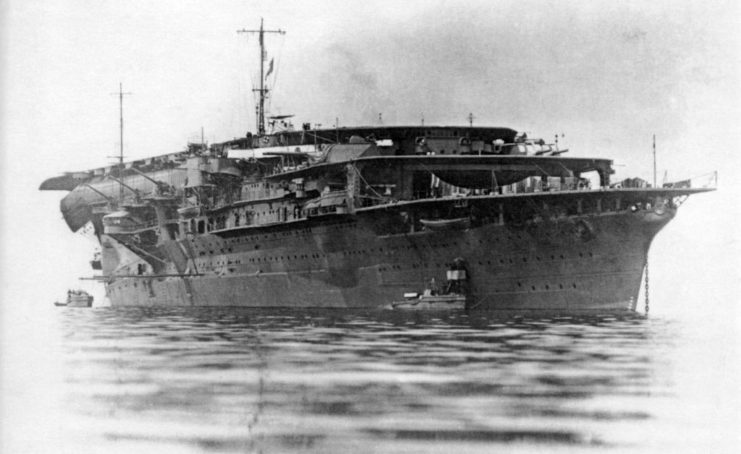
Commissioned in 1921 after construction began the previous year, Kaga was initially intended to be a Tosa-class battleship. However, with the signing of the Washington Naval Treaty in 1922, which allowed for two battleships to be converted into aircraft carriers, Kaga was slated for scrapping. The Great Kantō earthquake of 1923 led to the loss of the battlecruiser Amagi, resulting in the decision to convert Kaga instead of Amagi.
Kaga’s transformation involved modifying her flight deck into three stacked decks, along with other necessary changes. She was also outfitted with a twin-gun Model B turret on each side of the middle flight deck, six casemate-mounted guns aft, and 10 Third Year Type 20 cm/50 caliber guns, previously used as the main armament for Japan’s heavy cruisers during WWII.
After successful sea trials, Kaga was officially commissioned into the Imperial Japanese Navy in November 1929 as its third aircraft carrier, joining Akagi and Hōshō in the fleet.
Kaga‘s early service with the Imperial Japanese Navy
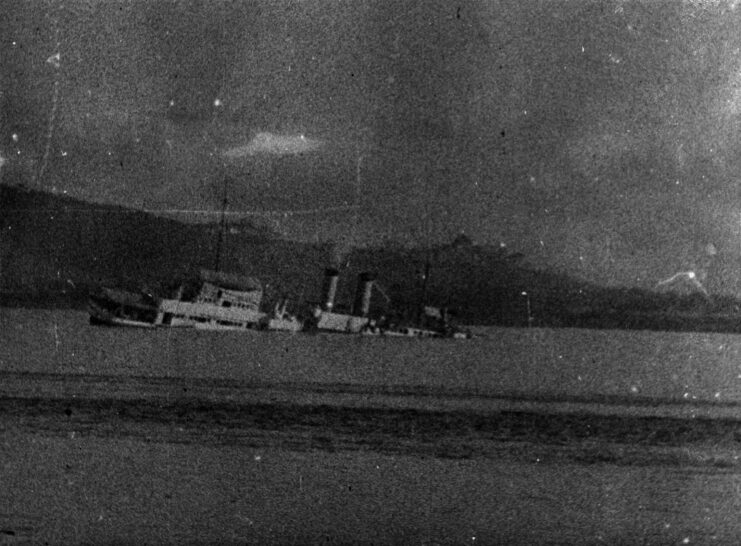
Following the Shanghai Incident, Kaga underwent several upgrades, as she was considered one of the weaker carriers in the Imperial Japanese Navy’s fleet. She was later deployed during the Second Sino-Japanese War (1937-45), when Japan once again engaged in conflict with China. Kaga remained in Japanese waters, serving as a base of operations for aircraft conducting bombing missions.
The conflict ultimately concluded in defeat for Japan, with Japanese forces surrendering to China and ceding control of the occupied territories.
Japanese attack on Pearl Harbor
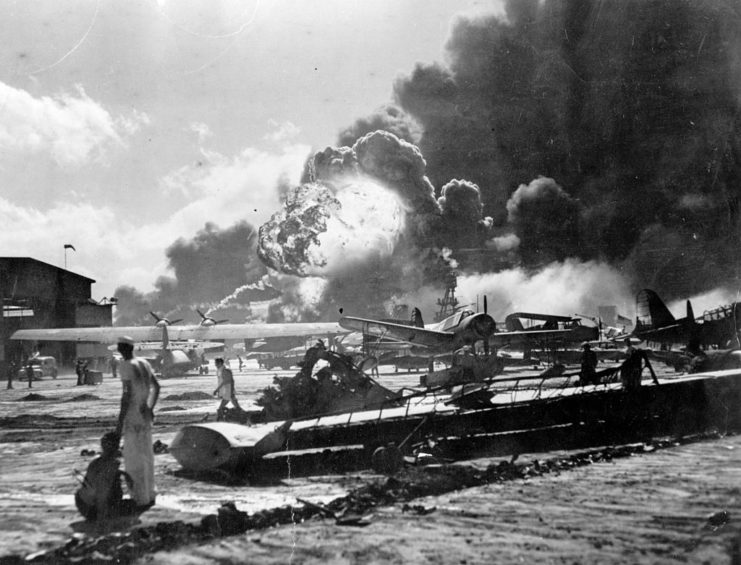
In 1941, the Japanese Imperial Army tasked Marshal Admiral Isoroku Yamamoto with planning a large-scale offensive against the US Navy‘s Pacific Fleet. This wound up being the December 7 attack on Pearl Harbor, in which Kaga played a role. For the attack, the aircraft carrier had ferried 18 Mitsubishi A6M Zeros, 27 Nakajima B5Ns and 27 Aichi D3As.
The bombers and fighters that took off from Kaga were successful in their missions, scoring hits on the USS Maryland (BB-46), West Virginia (BB-48), Oklahoma (BB-37), Nevada (BB-36), California (BB-44) and Arizona (BB-39). In addition, they destroyed 20 grounded American aircraft and took out a single airborne one.
Once her mission at Pearl Harbor was complete, Kaga returned to Japan. Her work in the Pacific Theater, however, was far from over.
Kaga‘s continued World War II service
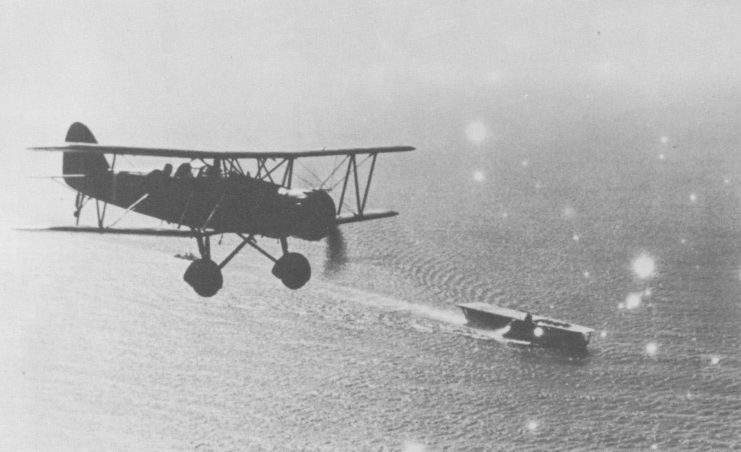
Following the attack on Pearl Harbor, Kaga was moved to Truk, in Micronesia. From there, she supported the Battle of Rabaul, providing aircraft for the initial airstrike. In February 1942, her aircraft took part in a sortie against an American battleship in the Marshall Islands. During the effort, she ran into a reef and had to be temporarily removed from service for repairs, before returning to duty.
Kaga‘s final engagement was during the Battle of Midway. She departed from the Inland Sea at the end of May 1942, along with the rest of the Combined Fleet, and set up around 290 miles northwest of Midway Island.
On June 4, 1942, the ship was relentlessly attacked by American dive bombers. The first attempt was initially repelled by the Japanese, while the second, led by US Navy aviator C. Wade McClusky, was much more successful. Twenty-five Douglas SBD Dauntless from the USS Enterprise (CV-6) appeared over the ship, nearly undetected, and hit Kaga with a 1,000-pound bomb and multiple 500-pound bombs.
After failed attempts to repair the damage, the aircraft carrier sunk into the Pacific Ocean.
Aftermath of the Battle of Midway
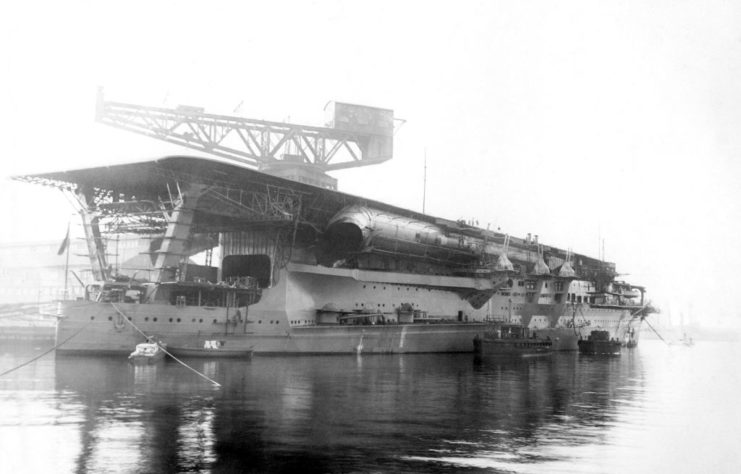
While some sailors were rescued from Kaga, a large number perished; 811 of those aboard the vessel, many of them engineers, armorers and mechanics, were killed. That’s not to mention the number of pilots who lost their lives. Government and military officials, focused on looking invincible, were worried about news reaching the Japanese public, and the surviving sailors were snuck back into the country to prevent Midway’s story from getting out.
Are you a fan of all things ships and submarines? If so, subscribe to our Daily Warships newsletter!
The battle, itself, is seen as a turning point in the Pacific Theater. In addition to Kaga, the Imperial Japanese Navy lost three other aircraft carriers: Akagi, Sōryū and Hiryū. The loss of the vessels and the aviators who manned their aircraft significantly impacted Japan’s effectiveness, and the country’s forces were never able to recover. For many, it’s one of the major contributing factors for its defeat in the war.
